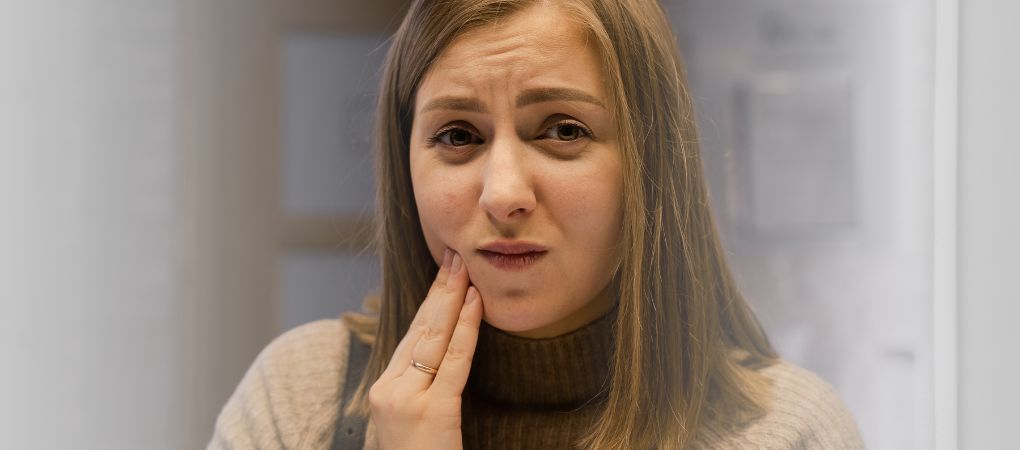Francesca Galiano
|
16/08/2022 - Last update 29/12/2022
P. Di Giacomo, E. Cerignoli, V. D'Ermes, G. Ferrato, A. Polimeni, C. Di Paolo | Year 2021
Gnathological and osteopathic treatments with digital evaluations before and after therapies a case report of a patient with ehlers-danlos syndrome
Pathology:
Ehlers-Danlos Syndrome
Type of study:
Case report
Date of publication of the study’:
2021/May/05

Purpose of the study
- Objective: to report the utility of an integrated therapeutic program, including OMT, in the management of a person with Ehlers-Danlos syndrome
- Measured outcomes: evaluation of pain through Verbal Numeric Scale and of musculoskeletal and gnathological alterations through clinical and digital examinations (surface electromyography or sEMG, T-scan III and stabilometric platform)
Participants
- Number: 1
- Description: 33-year-old woman with Ehlers-Danlos syndrome (hypermobile type) and temporomandibular disorders. A history of moderate pain (50 out of 100 on VNS) at the level of the temporomandibular joint and of the left masseter. Episodes of occipital and/or temporal headache (VNS=70) and bilateral neck pain (VNS=20) 5 times a week.
Neither tinnitus nor dizziness. Presence of a diffused pain along the spine and limbs rated from 20 to 70 on the VNS.
Presence of class I dental occlusion with signs of tooth wear and normal overjet and overbite; left temporomandibular joint subluxation, excessive mouth opening excursion (52mm) and tenderness at masseters, pterygoids and temporalis; bilateral flattening of temporal glenoid fossa.According to the five models, the osteopathic evaluation highlighted the following:- biomechanical model: complicated birth with C-section, osteopenia and cervical/lumbar disc protrusions
- neurological model: myopia
- respiratory-circulatory model: a history of tonsillitis and tonsillectomy, mitral valve insufficiency, one episode of pneumonia and gastro-esofageal reflux
- metabolic model: ovarian cysts, vulvodynia and pudendal neuralgia; lactose intolerance, hiatal hernia and intestinal disease
- behavioral model: mild level of somatization.
An external rotation of the right half of the body and an internal rotation of the left half of the body were also highlighted
Subsequntly, three digital tests were then carried out:
-
- sEMG of masticatory muscles, which revealed a prevalence of temporalis muscles over masseters and an excessive masticatory effort
- T-scan III for the analysis of the dental occlusion, which showed an occlusal center of gravity on the right before the second molar and a loss of neuromuscular efficiency
- stabilometric platform, which showed a strong interference of the oculomotor system, an alteration of the cervical rachis and a greater load on the right foot
Interventions and evaluations
- evaluation of pain through VNS and of the musculoskeletal and gnathological alterations through clinical and digital examinations (sEMG, T-scan III and stabilometric platform) before and at the end of the course of treatment
- gnathological therapy focused on the stomathognatical components
- 18 months of treatment with occlusal splint and proprioceptive exercises
- OMT focused on pain management of spine and musculoskeletal dysfunctions
- 3 cycles of 4 45-minutes weekly sessions, 2 month apart from one another
- specific eye examination followed by a rehabilitation
- the patient was also treated for for visceral issues emerged during the osteopathic examination
Results
At the end of therapy (after 18 months from the first visit), no masticatory, temporomandibular or neck pain was reported. Headache episodes had decreased in frequency and intensity (VNS dropped to 40).
The patient gained more control of mandibular movements by improving her habits (she stopped clenching her teeth continuously).
The widespread pain in the body also decreased to a range of 10-30 according to the VNS.
All the digital examinations showed a normalization of the parameters, with a better neuromuscular efficiency in mastication, a better load distribution and an improvement of the oculomotor system thanks to an eye rehabilitation.
Discussion
The gnathological therapy, with the support of proprioception exercises, which worked as a real “cognitive-behavioral therapy”, allowed the improvement of mastication and the disappearance of the pain connected to the dysfunctions present before the therapeutic course. In particular, proprioceptive exercises were central in maintaining the results obtained with occlusal splint, given that the loss of proprioception is typical in cases of Ehlers-Danlos syndrome.
On the other hand, OMT favored the improvement of the state of overall pain and of posture, acting on the rebalancing of the different body systems: joint movement, lymphatic drainage, blood flow, general body proprioception, spine.
Such a study shows the feasibility and effectiveness of a multidisciplinary approach in complex conditions.
The review of Osteopedia
By Marco Chiera
Strengths: accurate description of the clinical case and of the tests carried out; good description of how the therapy unfolded over time and of the dysfunction detected during OMT; good discussion on the importance of the single therapy and of their integration; description of an integrated diagnostic and therapeutic program.
Limits: Although it can be assumed that the OMT had been personalized, it is not clear which approach and techniques were actually used (only a brief reference if made to gentle techniques like positional release and counterstrain); there is no indication on how much the OMT affected the final result; a discussion on the limitation of the study is missing.

Are you an osteopath?
Register and enjoy the membership benefits. Create your public profile and publish your studies. It's free!
Register now
School or training institution?
Register and enjoy the membership benefits. Create your public profile and publish your studies. It's free!
Register now
Do you want to become an osteopath? Are you a student?
Register and enjoy the membership benefits. Create your public profile and publish your studies. It's free!
Register now







